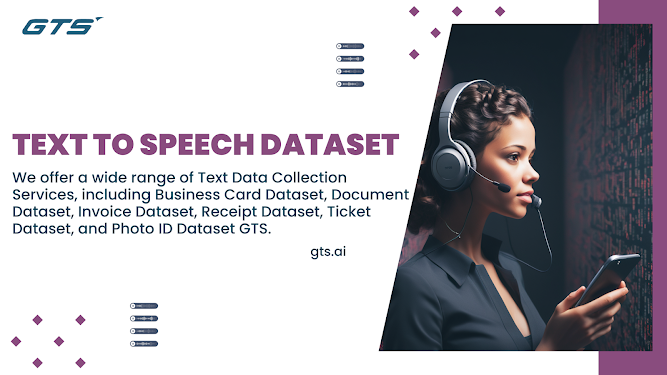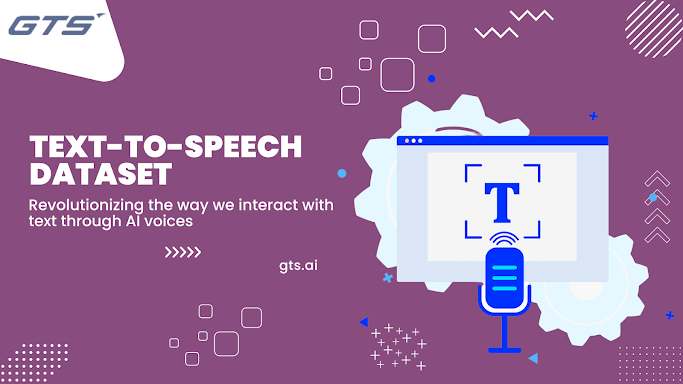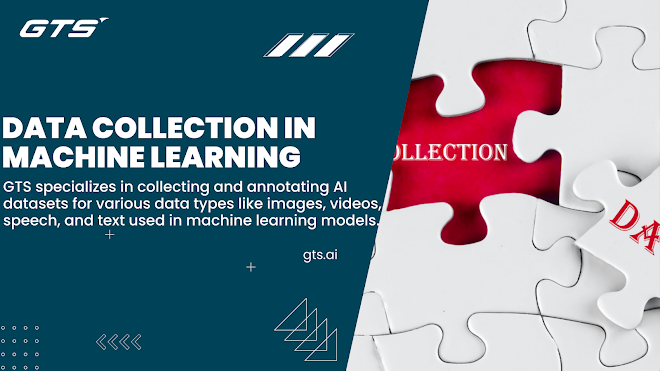Revolutionizing Communication: The Power of Text-to-Speech Datasets in AI
Revolutionizing Communication: The Power of Text-to-Speech Datasets in AI
Introduction:
In an era where digital transformation is no longer a choice but a necessity, Artificial Intelligence (AI) stands at the forefront, leading the charge in innovation across industries. Globose Technology Solutions, a beacon in the realm of AI, is dedicated to harnessing the potential of technology to create solutions that not only innovate but also inspire. A shining example of this dedication is the exploration and utilization of Text-To-Speech (TTS) technologies. This blog post delves into the intricacies of text-to-speech datasets, the backbone of TTS technologies, highlighting their significance, the challenges in their creation, and the vast applications they empower.
The Essence of Text-to-Speech Technology
Text-to-speech technology is a fascinating AI application that converts written text into spoken words. This technology leverages sophisticated machine learning models trained on extensive datasets comprising text and corresponding audio recordings. The quality and diversity of these datasets are crucial for the development of TTS systems that are not only accurate but also capable of expressing a range of emotions, intonations, and accents, making digital interactions more human-like and inclusive.Why Text-to-Speech?
The importance of TTS technology lies in its ability to make information more accessible to everyone, including those with visual impairments, reading difficulties, or learning disabilities. Furthermore, it enhances user experiences across various platforms, providing a hands-free mode of receiving information – a necessity in today's fast-paced world.The Backbone of TTS: Text-to-Speech Datasets
At the heart of any TTS system lies its dataset. A text-to-speech dataset typically consists of large volumes of text and their accurately corresponding audio recordings. These datasets are meticulously curated to cover a wide array of phonemes, intonations, and expressions in multiple languages and accents.Challenges in Creating Text-to-Speech Datasets
- Diversity and Inclusivity: Capturing the vast spectrum of human speech, including different dialects and accents, is challenging. Ensuring diversity in datasets is crucial for creating inclusive TTS systems.
- Quality of Recordings: High-quality audio recordings are essential for training sophisticated TTS models. Background noise, poor recording equipment, and inconsistent audio levels can detrimentally affect the model's performance.
- Alignment of Text with Audio: Precise alignment of text to its corresponding audio is crucial. Misalignments can lead to inaccuracies in speech synthesis, affecting the naturalness and intelligibility of the output.
- Scalability: Creating extensive datasets that cover all nuances of human speech is resource-intensive. It requires significant time, effort, and financial investment.
Overcoming the Challenges
Globose Technology Solutions approaches these challenges head-on with innovative solutions:- Diverse Collection Methods: Employing various collection methods, including crowd-sourcing, to ensure diversity in voice, accent, and dialect.
- Advanced Recording Techniques: Utilizing professional-grade recording equipment and environments to ensure the highest quality of audio samples.
- Sophisticated Processing Tools: Leveraging advanced tools for precise text-audio alignment and noise reduction to enhance dataset quality.
- Scalable Data Collection: Implementing efficient, scalable methods for data collection and processing to rapidly expand dataset size without compromising quality.
Applications of Text-to-Speech Technology
The applications of TTS technology are vast and varied, reflecting its potential to transform interactions in our digital world:Accessibility
TTS technology is a cornerstone in making digital content accessible to individuals with disabilities. It allows visually impaired users to independently consume written material on the internet, books, and documents.Education
In educational settings, TTS can support learning by providing auditory learning materials for students who benefit from hearing content as well as reading it. It's particularly beneficial for language learners and individuals with reading difficulties.User Interface Enhancement
TTS enhances user interfaces across devices and applications, enabling hands-free operations and making digital products more user-friendly. It's extensively used in navigation systems, smart assistants, and customer service chatbots.Entertainment
In the entertainment industry, TTS technology is revolutionizing content consumption by providing audiobooks, newsreaders, and voiceovers, making content more engaging and accessible.The Future of Text-to-Speech Technology
The future of TTS technology is promising, with advancements focusing on making synthetic voices more expressive, emotional, and indistinguishable from human speech. Globose Technology Solutions is at the forefront, pioneering the development of next-generation TTS systems that promise to redefine our interaction with digital devices.Innovation in TTS is not just about creating more natural-sounding voices but also about understanding the context, emotion, and nuances of spoken language. As AI continues to evolve, so will the capabilities of TTS technology, offering unprecedented opportunities for enhancing accessibility, education, entertainment, and user experience.





Comments
Post a Comment